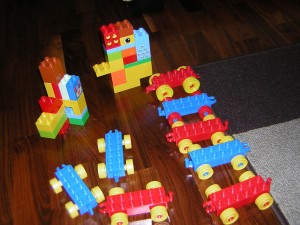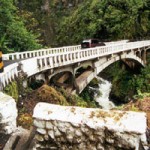What goes as much as trucks, cars, and trains? Kids! They are always on the go. As kids play with toys that go they are also developing brain connections and kindergarten readiness skills.
When younger children play with cars, trains and trucks they are exploring cause and effect. Cars and trucks move when pushed; they stay still when not being pushed. Kids discover that they can control, more or less, the direction that toys move. Their play develops hand-eye coordination and small muscle control, as well. There’s lots of new words and ideas such as  up, down, around, over, under, beside, behind, fast, slow,and other vocabulary.
up, down, around, over, under, beside, behind, fast, slow,and other vocabulary.
Later, children add an imaginative dimension to their play. The cars and trucks are going somewhere; the train needs to get loaded and and starts and stops at the station. In pretend play, children practice being in control of a situation, making decisions, and problem-solving. When children play with others, they practice social skills like sharing and negotiating.
Not only boys, girls enjoy playing with cars, trucks, and trains too–although boys seem to have better sound effects. Cars, trucks, and trains are fun to count. What colors are they? Wheels are circle shapes. There’s lots of readiness for kindergarten learning. What else do you notice children learning as they play with things that go?

